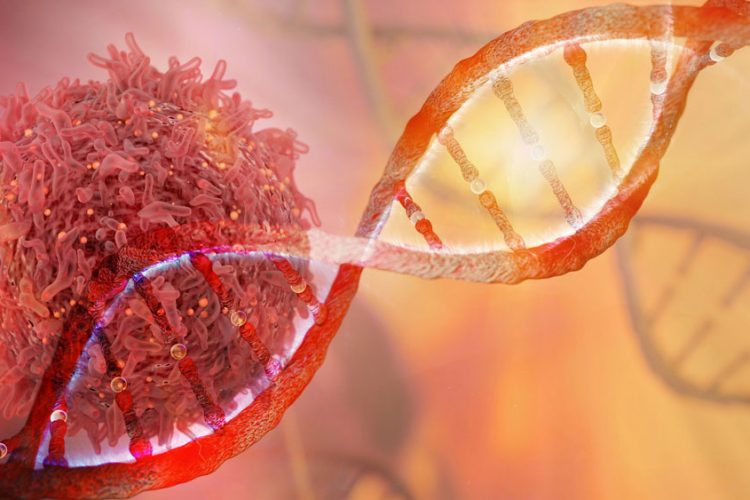Unique method to find cancer mutations offers chance of improved treatment
Posted: 12 September 2018 | Drug Target Review | No comments yet
Researchers have condensed methods for identifying cancer gene mutations in cells into a single process, to aid understanding of tumours and improve treatment outcomes.


Cancer cells often have mutations in their DNA that can give scientists clues about how the cancer started or which treatment may be most effective. Finding these mutations can be difficult, but a new method may offer more complete, comprehensive results.
A team of researchers has developed a new framework that combines three existing methods of finding these large mutations – called structural variants – into a single step that provides a more complete picture. The new method has the potential to help identify new structural variations within cancer cell DNA and learn more about how those cancers begin.
Commenting that the resulting method was greater than the sum of its parts, Feng Yue, assistant professor of biochemistry and molecular biology at the Pennsylvania State University and one of the paper’s corresponding authors, said: “We were able to design and use this computational framework to connect the three methods, to get the most comprehensive view of the genome.
Each method by itself can only review a portion of the structural variations, but when you integrate the results of the three different methods, you can get the most comprehensive view of the cancer genome.”
Structural variants are large mutations in DNA that can induce cancer-causing genes to switch on. Certain types of brain cancer can be caused by structural variants that amplify particular cancer-causing genes. In some cancers, knowing a patient has this abnormality helps doctors decide on the best treatment plan.
The researchers say finding these structural variants is important for several reasons.
“Many of the structural variants that are found in human cancers do not appear to directly impact a gene,” said Jesse Dixon, a Helmsley-Salk Fellow at the Salk Institute and one of the study’s first and corresponding authors. “Instead, many structural variants appear in noncoding portions of the genome, what people have historically referred to as ‘junk DNA’, and it can be a bit of a mystery as to why these may be contributing to cancer.”
Yue added, “If you are a cancer patient, knowing about the structural variants that led to the cancer can help us understand why you got sick and possibly which treatment could be best.”
The three existing methods for finding structural variants employed by the researchers were: optical mapping, high-throughput chromosome conformation capture (known as Hi-C), and whole genome sequencing, which has been used to discover the majority of structural variants that are already known.
Using their new method, the researchers were able to find structural variations for over 30 types of cancer cells. The team of scientists also used the same methods to begin to understand why certain classes of structural variants may be contributing to cancers.
The researchers observed that some structural variants appear to affect regulatory gene “switches” in noncoding sequences of DNA. Defective switches prevent the appropriate turning on or off of specific genes and this can contribute to cancer. They also used the Hi-C method to explore how structural variations can affect 3D genome structure – ie, how DNA folds itself within the cell.
The role of ‘extra’ DNA in cancer evolution and therapy resistance…
“Cells are small, but their DNA is very long – laid out in a line, all the DNA from one cell would be more than two meters long,” explained Job Dekker, professor and co-director of the programme in Systems Biology at University of Massachusetts, investigator of the Howard Hughes Medical Institute and a corresponding author of the paper. “That’s why DNA needs to fold in intricate ways. We have found that genomic alterations in cancer cells can lead to differences in how the genome folds and this can lead to cases where genes become turned on or off by the wrong regulatory switches”.
The team of scientists discovered that structural variants impact genome folding in cancer cells, and that these changes may be contributing to the cancer.
“One of discoveries we had made in the past is that our genome is folded up into distinct structures, almost like little neighbourhoods,”Dixon said. “It appears as though some structural variants cause changes to these neighbourhoods, such that a cancer causing gene is moved from a neighbourhood where the gene is kept quiet into one where the gene becomes activated.”
The scientists suggest that this work could lead to an improved ability to predict which structural variants may contribute to cancer, and which genes they may be targeting.
Details of the method were published in Nature Genetics.
Related topics
Disease research, DNA, Screening
Related conditions
Cancer
Related organisations
Massachusetts University, Pennsylvania State University, Salk Institute for Biological Studies
Related people
Feng Yue, Jesse Dixon


